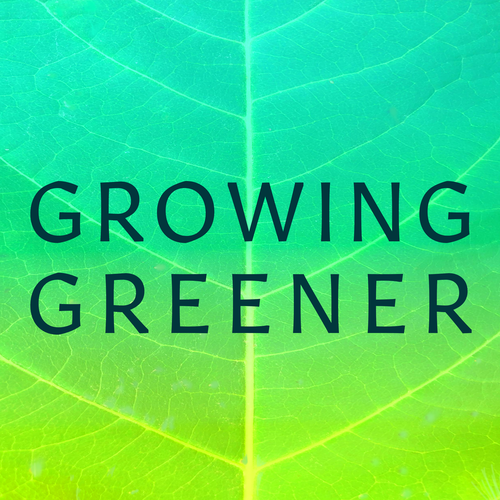As “chief seed sower” at Devine Native Plantings, LLC, Jean Devine takes time out from habitat revitalization to mentor students in “Biodiversity Builders,” a paid, six-week program that introduces participants to working in partnership with nature while also building a business
An Overlooked Native Fruit Finds Its Niche
Compact, beautiful, and trouble-free, the pawpaw is the northernmost representative of a tropical fruit family, a North American native tree that bears large fruits with a delicious, exotic flavor over an extended season, while also supporting a host of native butterflies and moths. Sheri Crabtree of Kentucky State University’s Pawpaw Program explains why this gem never made it into commercial fruit orchards and why it is ideal for the home garden.
A Brilliant New Book for Gardeners
How Introduced Plants May Behave Like Ecological Time Bombs
When our native flowering dogwood tree was laid waste by an imported fungus in the 1970’s, the east Asian kousa dogwood was widely planted as a disease-resistant replacement. After 50 years, however, it has turned invasive. Dr. Bethany Bradley of the University of Massachusetts Amherst explains that such a “lag period” is common among introduced plants and why this makes plant introduction a very risky gamble.
Benefits Big and Small of Grassland Planting
Policy makers have promoted tree planting as a way to sequester carbon and fight climate change, but grassland advocates say that native prairie is more effective in some circumstances and provides unique ecological benefits. Dr. Jessica Gutknecht of the University of Minnesota examines the opportunities and limitations of this approach, and the potential impact of backyard prairies such as her own.
Greening the Green Industry
Gardening consumes an enormous amount of plastics, 1.66 billion pounds annually in the U.S. according to the most recent figures, most of it in the form of single-use, unrecyclable pots. Ecological landscape designer Marie Chieppo has made it her mission to change this. Learn about how her work is promoting recycling, changes in design to use less plastic, and a switch where possible to biodegradable and compostable substitutes.
A Personal Exploration of the Beauty of Back Yard Insects
His participation in a Bioblitz introduced Brian Stewart to the fascination of the local insect life. A dozen years later he had photographed some 400 species in his own back yard, including many strange and beautiful creatures. Brian shares his story and tips for insect identification in this program first broadcast in November of 2019
Izel Native Plants, Expanding the Palette and Knowledge-Base of American Gardeners
If you are frustrated by the poor selection of native plants at local garden centers, check out Izel Native Plants. Listen as founders and owners Amanda McLean and Claudio Vasquez explain how they have made the wares of leading wholesale growers accessible to amateur gardeners, and how their company emphasizes education as much as sales.
A Youth Uprising in Montana
Back to the New Basics
Gardening is changing, and our understanding of the field must keep pace. Veteran horticulturist and longtime teacher Joe Seals rises to this challenge in his new book, "Back to the New Basics: A Practical Guide and New Reference Manual to the Ways, the Whys, and the New Sciences of Better, Easier Gardening." A great introduction for the novice and a quick update for experienced gardeners, this is an invaluable book.
A Sherlock Holmes of the Forest
Grassland Gardens for Our Era
As our climates grow warmer and frequently drier, gardeners need the drought and heat tolerance, and innate sustainability of our native grassland plants more than ever. In their new book, The Gardener’s Guide to Prairie Plants, Neil Diboll and Hilary Cox have combined their decades of experience to produce an indispensable tool for beginners and veterans alike, with invaluable advice about how to create functioning grassland ecosystems inside and outside the prairie states.
Making Our Vegetable Gardens More Climate Resilient
“Grow Your Own” is a cornerstone of sustainability, but our vegetable gardens are being challenged by increasingly erratic weather as the climate changes. John Traunfeld, Program Director at the University of Maryland’s Home & Garden Information Center shares his experiences in making food gardens more climate resilient, and how this can even draw our communities closer together.
Gardening on a Lead-Contaminated Soil
Sculpting Sunlight
Beautiful and Field Tested Native Lawns
A Critical Look at Permaculture
More about Mulch
Will the “volcano mulch” the landscaper piled around the bases of your trees kill them? And is a mulch made of ground-up shipping pallets really beneficial for your plants? You may be surprised by the science-based insights about common organic mulches that Dr. Linda Chalker-Scott of Washington State University shares in the most recent “Growing Greener.”

